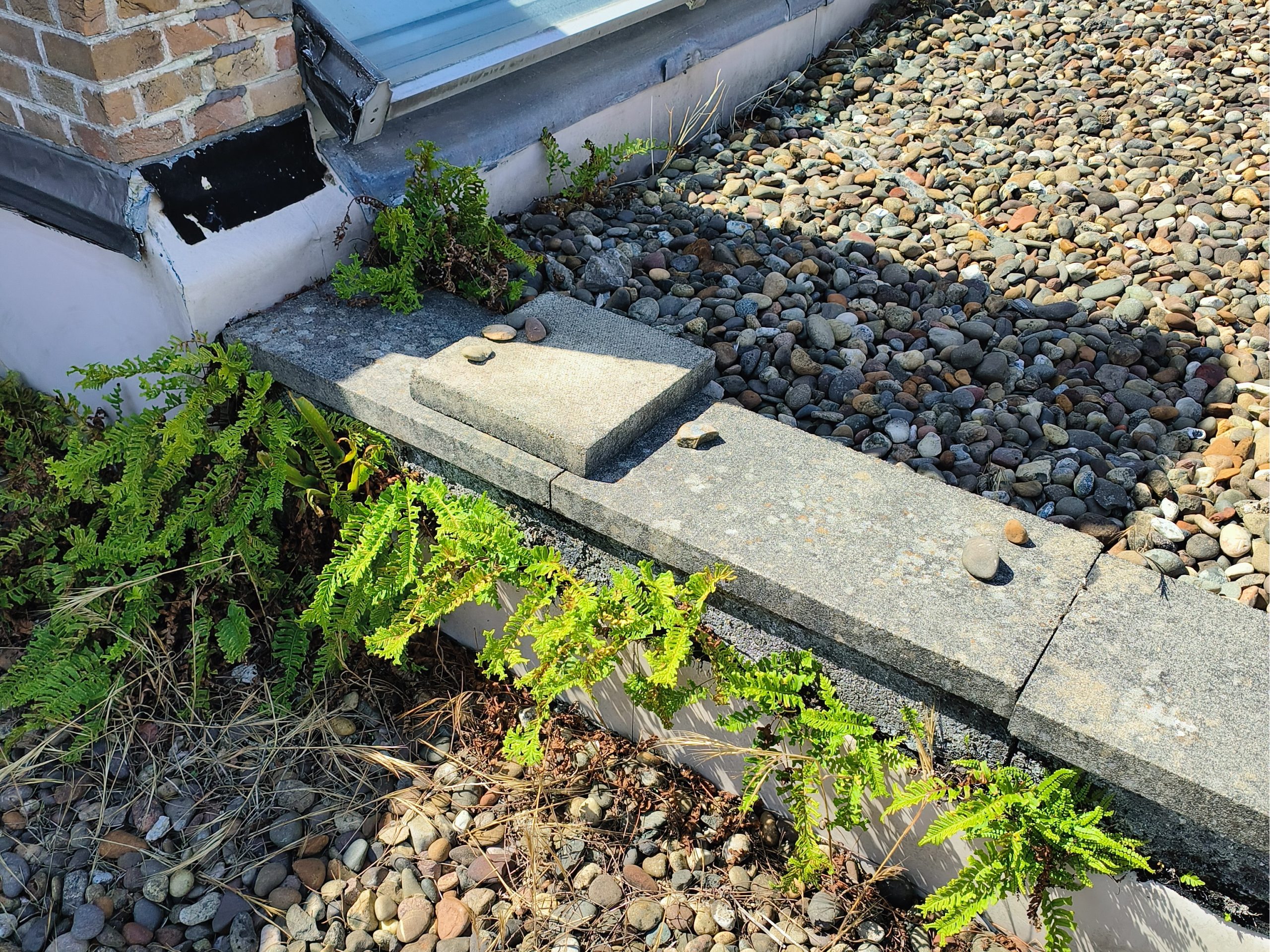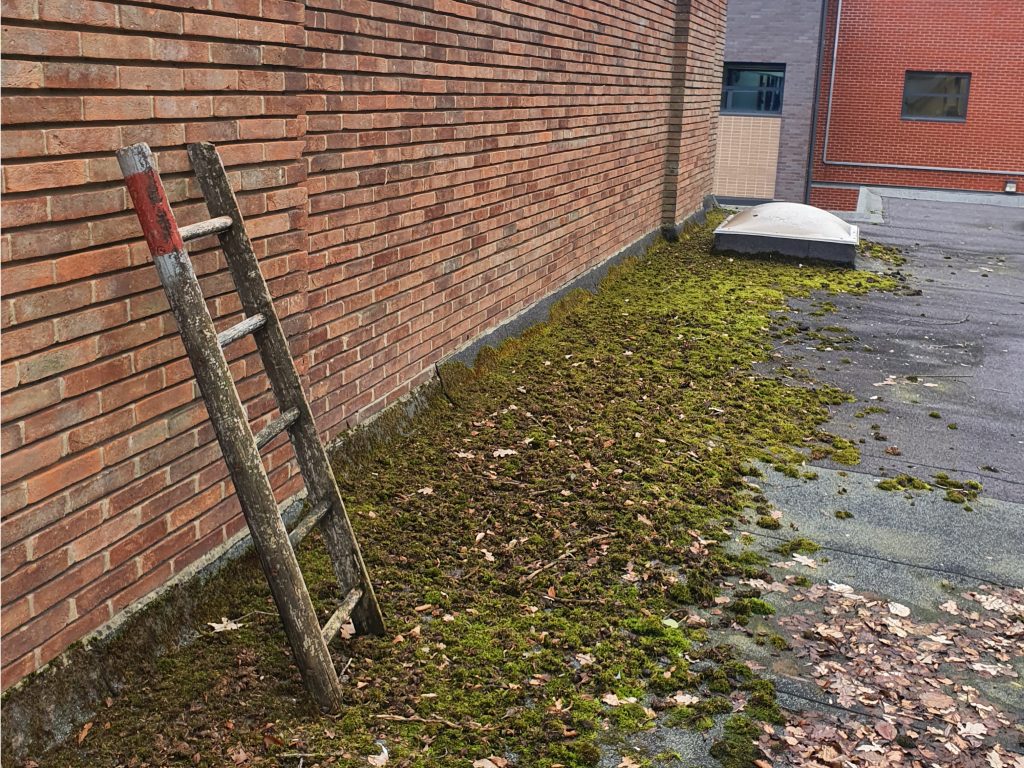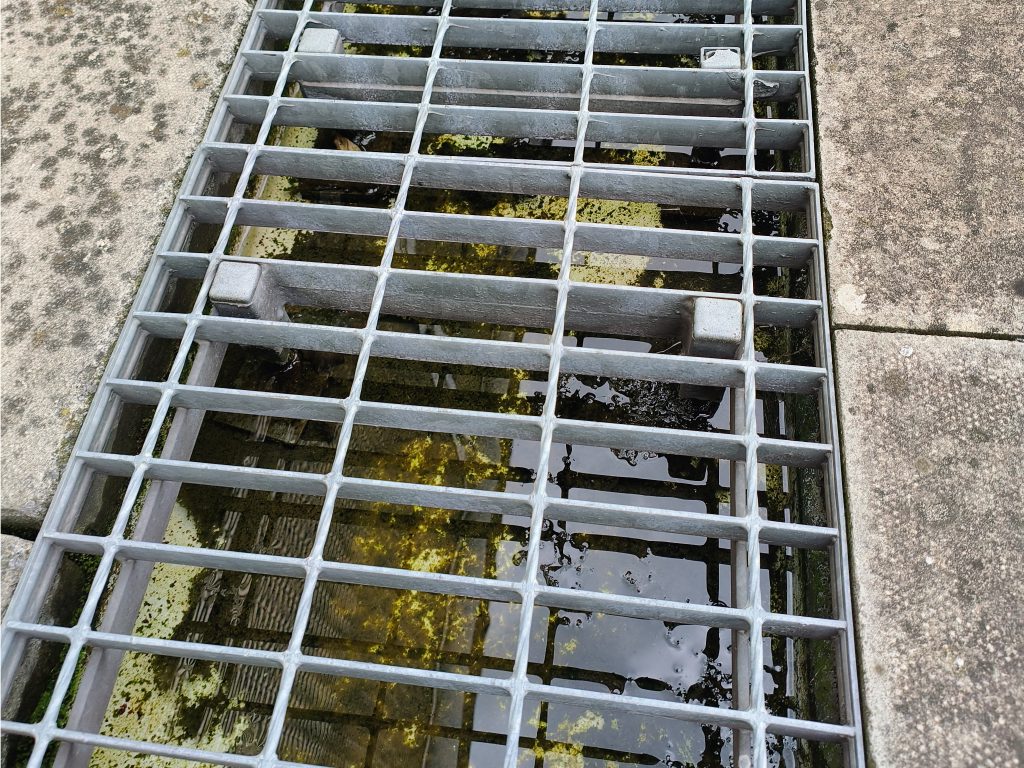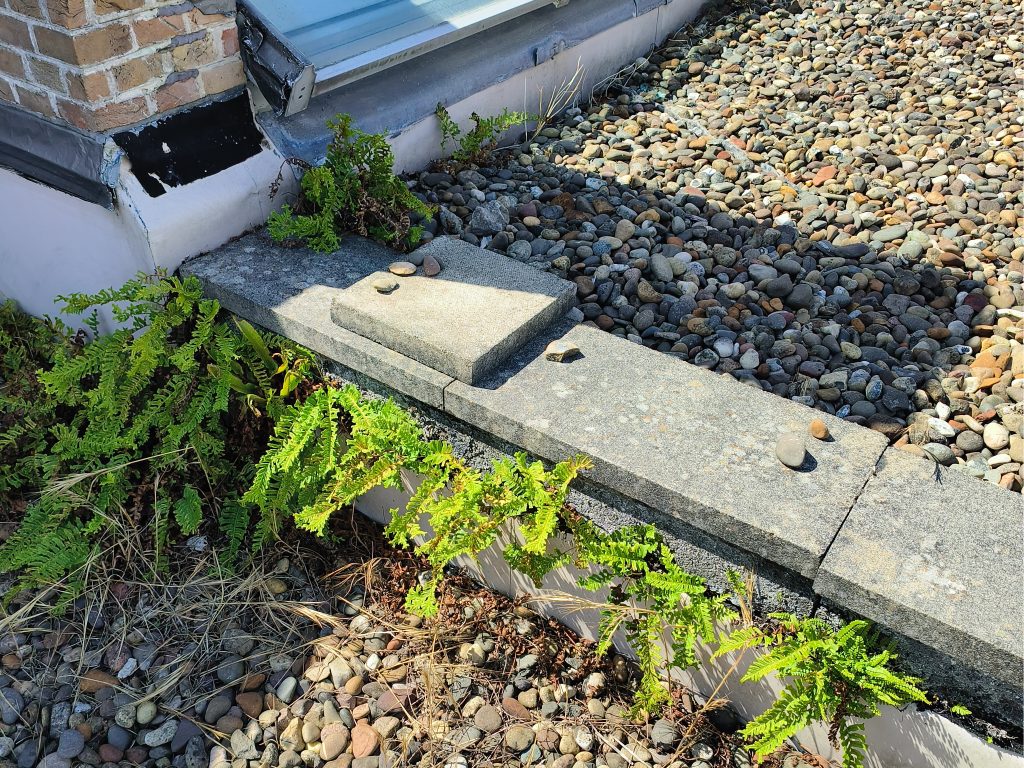Flat Roof Maintenance – Why it Matters
We all love the convenience that flat roofs provide. They take up less space than pitched roofs, they can help you achieve a particular aesthetic, and they are a great place to locate plant and solar panels.
The unobtrusive nature of flat roofs is beneficial, but it may mean they might be out of mind, as well as out of sight.
This article explains:
- why you should ensure that your flat roofs are provided with a proper programme of inspection and maintenance,
- why there is no such thing as a maintenance free roof and how not to be deceived,
- how you can design for low maintenance in the first place, and
- what a good maintenance and inspection regime looks like.
Why you should maintain flat roofs
Here are three major reasons why you should maintain your flat roofs:
1. Maintain flat roofs for a Long Life
A roof denied an occasional inspection is storing up bigger problems for later. If you don’t have a good maintenance regime in place, you’ll see a dramatic acceleration in the aging of the whole roof installation. This will bring about completely unnecessary and onerous costs.
No roof lasts forever, but a well-designed, well-maintained roof can give a full life of service. Some of our flat roof products have been successfully protecting roofs for over 50 years.
Many flat roofs designed and constructed towards of the end of the 20th Century will now be reaching the end of their natural life. It is essential that if a replacement roof is not to fail, it should be designed by an experienced roofing specialist using modern engineered materials and installed by an accredited contractor. You know where we are!
2. Maintain flat roofs for Safety Reasons
A poorly maintained roof will also put your staff at risk of accidents. Make sure that fall protection is installed at the perimeters and make a full risk assessment of the roof hazards to protect those who will inspect your roof. Water pooling, ice during winter and build ups of debris or slime are hazards which can be and should be avoided.
Remember also that a poorly maintained roof also creates hazards for the occupants of your building, and additional costs and disruption when things must be put right. Look at your insurance policy and find out what your obligations are.
3. Maintain flat roofs to Comply with your Warranty
When your flat roof is delivered it will come with a warranty which can be invalidated if you don’t comply with its requirements to maintain the roof. The warranty is your protection against problems with the products and/or the installation. Keep it valid!
Your warranty will specify whether a roof area survey is required once or twice a year. Repairs and maintenance must be undertaken by a qualified operative in accordance with the manufacturer recommendations, codes of good practice and national standards, and your warranty provider will need a copy of the maintenance contract and inspection reports.
At SIG Design and Technology, we work with our partners to supply and deliver project-specific, fully guaranteed solutions. Two types of guarantee are provided:
- Product guarantees, which cover the integrity of the principal waterproofing components recommended in the design team’s specification, and
- Extended system guarantees, which cover any additional system components that have been specified and purchased from SIG Design & Technology.
There is no such thing as a ‘Maintenance Free Flat Roof’
Beware of any mention of a ‘maintenance free’ flat roof. There is no such thing. All flat roofs need maintaining.
You may be told that the roof you are being sold is maintenance free, but it is important to check the small print.
Maintenance of flat roofs is a condition of the following British Standards:
- BS 6229:2018 Flat roofs with continuously supported flexible waterproof coverings. Code of practice, and
- BS 8217:2005 Reinforced bitumen membranes for roofing. Code of practice
These standards give details of when inspections should be carried out, maintenance procedures and advisory notes. If a salesperson tells you their roof is maintenance free, check the manufacturers requirements and you’ll probably find that the product they are recommending should be installed to one of these standards.
Design for Low Maintenance
Maintenance is extremely important for all roofs, but maintenance programmes can be simpler and less onerous if the roof is properly designed to begin with.
For example, there is a tendency to design flat roofs to minimum falls and minimum upstands. But minimums are exactly what they state “Minimums”. Many designers see minimums as an annoyance which cause difficulties with threshold interfaces or parapet heights, but designing a roof to minimums or even less will inevitably lead to a need for more regular inspections and maintenance.
Designers should feel free to design at more than the minimum. Instead, they should design for a realistic, reasonable maintenance regime.
Here are a few examples of how poor design can impact your roof performance and increase maintenance requirements:
- Inadequate falls – if the roof pitch is too shallow this can create excessive ponding of water.
- Shallow upstands – upstand heights should be 150mm, otherwise during a heavy rain shower water can overflow the upstand and get into the roof.
- Poor detailing around penetrations such as rooflights and soil vent pipes create weak points in a roof and need to be robustly detailed.
Make sure your roof is designed by an experienced roofing specialist that has their own Professional Indemnity Insurance to cover the design.
What does a good flat roof maintenance regime look like?
Check the roof at regular intervals. An expert opinion on the condition of the roof is recommended. An inspection and maintenance contract with a roofing company is the best solution and may be a condition of your warranty. Professional assistance is great for peace of mind.
The following work should always be carried out:
- Clean the gutters and downpipes as well as other drainage components such as rainwater outlets on the roof.
- Remove debris from the roof area and from corners and edges.
- Clean bulk gravel from growing plants and rough debris.
- Check lashings and trims for any failings or vulnerabilities.
- Check running boards, roof hooks, snow guards and other built-in details.
- Check the paint coating of metal parts.
- Replace any damaged roofing material.
- Repair any brittle mortar.
- Check any wooden parts for pests and decay.
- Inspect the flat roof seams.
- Inspect and clean rooflights and other lighting elements.
Alongside our product partners, and with our team of site inspectors, we inspect thousands of flat roofs every year, so there’s little we haven’t seen on a flat roof. Have any concerns? Why not get in touch?
More Information
Read more about flat roof maintenance in our Guarantees section.
Our complete and impartial design service extends to the refurbishment and replacement of flat roofs. We also provide a complete assessment and recommendation service to reduce the risks of working at height.
Our DATAC accredited contractor members also have full access to support from the technical and commercial team pre-tender, during installation and on completion, including assistance with site surveys, wind uplift, thermal and acoustic calculations, design of tapered insulation schemes, maintenance and aftercare. Read more about DATAC here.
If you need some advice about a new or existing flat roof design, get in touch with us.
In the meantime, why not tag us into your flat roof horror story pictures on LinkedIn?

















Maintaining a flat roof can be a challenge, so I appreciate the strategies in this article. Especially when it comes to draining, because that is a key concern for us.